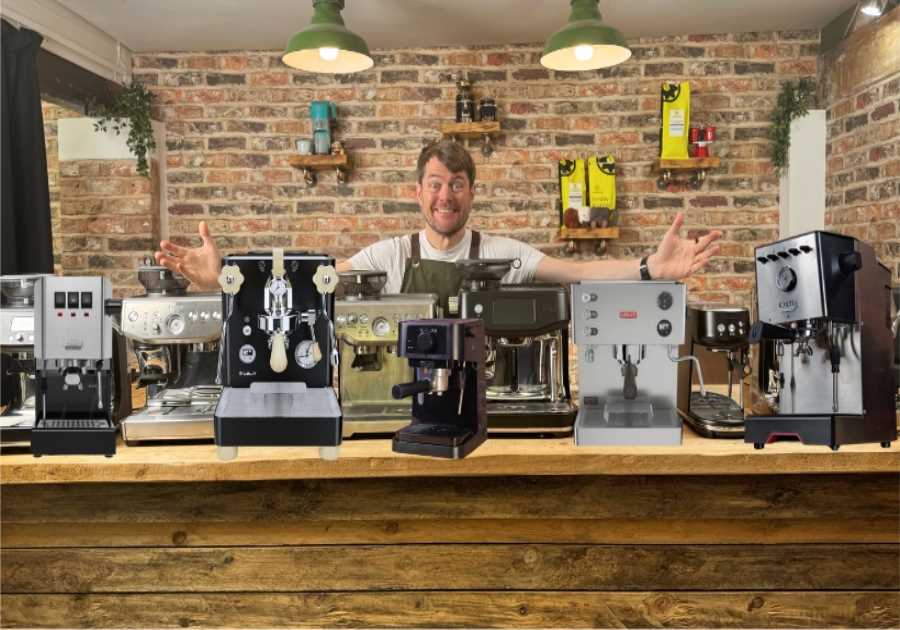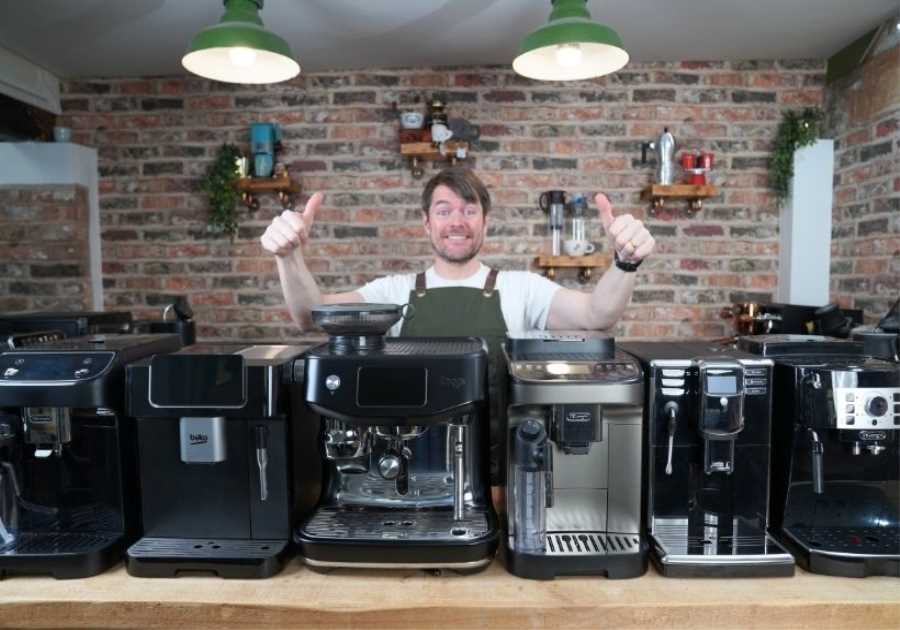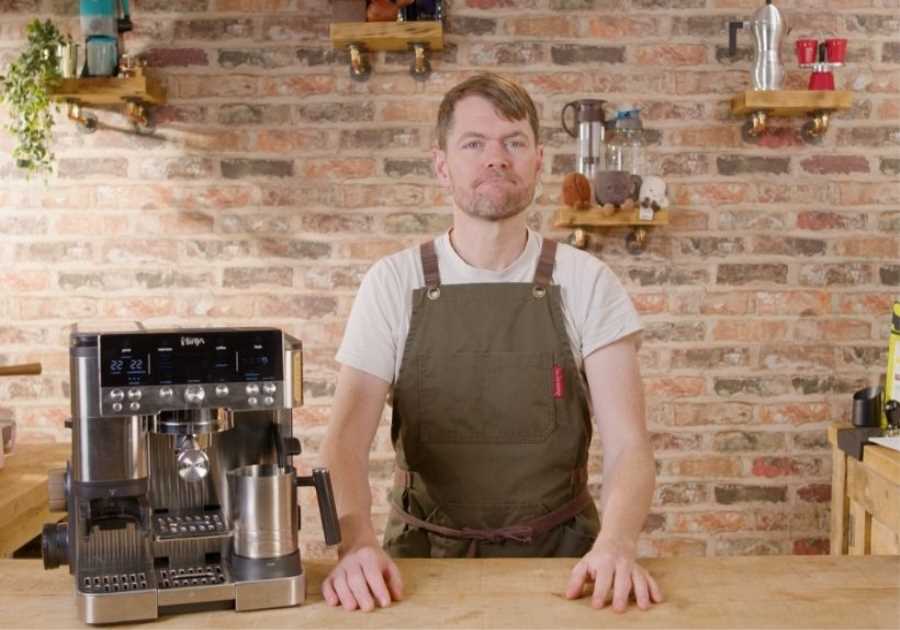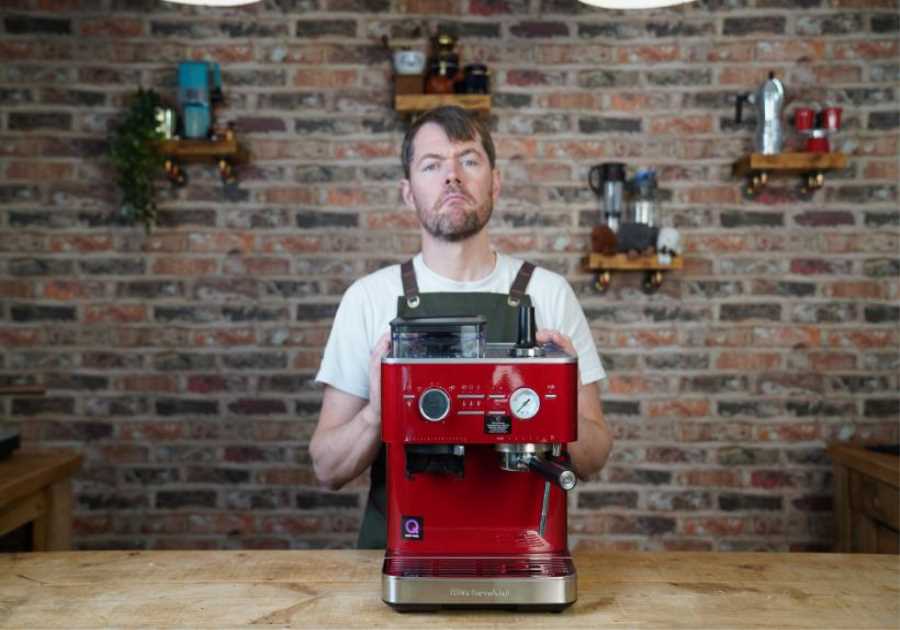As espresso machine technology and design have evolved over the past decade, more and more coffee shops have focused on the placement of their flagship piece of equipment.
Choosing the right location for your espresso machine not only affects barista workflow and customer interaction; it can also create a new focal point for any coffee shop if positioned properly. This can then serve to complement the aesthetics and design of your café to further elevate your brand.
I spoke to World Coffee in Good Spirits Champion, Dan Fellows, and designer of Slayer espresso machines, Christopher Flechtner, to learn more about espresso machine placement. Read on to find out what they said.
You may also like our article on how the espresso machine influences barista workflow.
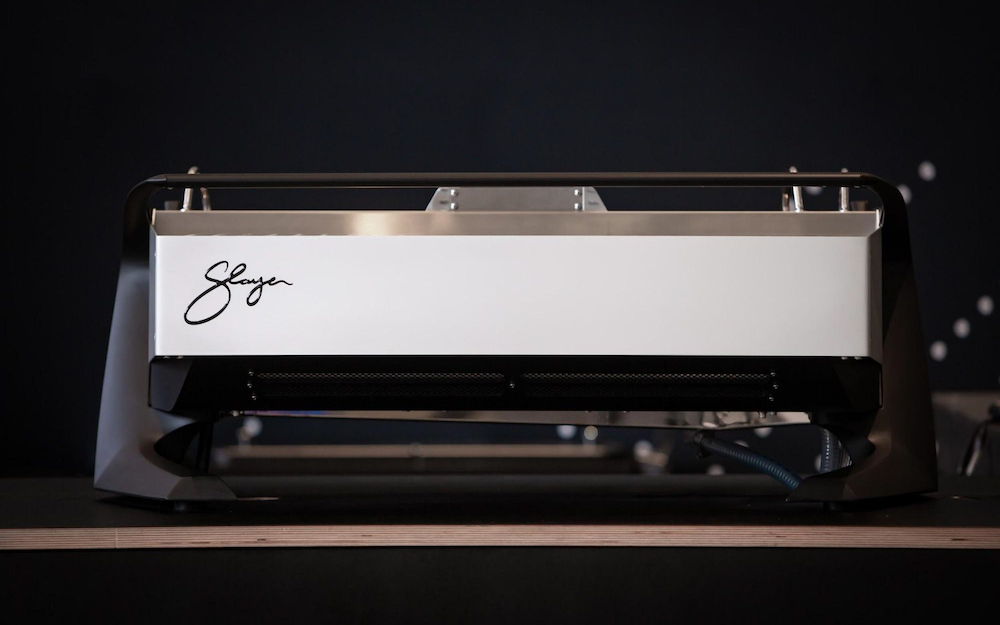
Positioning your espresso machine
For many years, coffee shops would place their espresso machines at the back of the bar. The general idea behind this placement was that it avoided creating a barrier between baristas and customers.
But naturally, this location meant that baristas would often have their backs to customers – arguably creating a barrier in a different way.
To resolve this issue, specialty coffee shops started to position their machines at the front of the bar in recent years. This way, baristas could interact with customers while preparing drinks at the same time – improving both quality of service and workflow.
What’s more, as espresso machine design has evolved significantly over the past several years, they have become somewhat of a centrepiece in many specialty coffee shops.
Dan Fellows is the UK Brand Ambassador and Sales Promoter for Slayer. He is also the 2018 and 2019 World Coffee in Good Spirits Champion, as well as a UK Barista Champion.
He believes that making the espresso machine the focal point of your coffee shop has become an essential aspect of café design over the past several years.
“With so many places now serving specialty coffee, it is increasingly difficult to differentiate [your brand from your competitors’],” he says. “Where once there were one or two shops serving specialty coffee within a given area, now there are many more.”
As the specialty coffee sector becomes increasingly saturated, it’s more important than ever for your brand to stand out.
“Coffee shops are able to elevate their brand even further with a machine that balances beverage quality and user experience,” Dan adds. “Ultimately, this creates a better overall experience for customers.”
The espresso machine as a focal point
Christopher Flechtner is the Lead Designer at Christopher Flechtner Design & Consulting. He is also the designer of Slayer espresso machines.
He tells me there are two main approaches to positioning your machine in a coffee shop: minimisation and elevation.
“[Minimisation is when you blend the machine into its surroundings by using] simple monochromatic shapes, with little-to-no space between the counter and machine,” he says. “Furthermore, you can even set the machine down into the countertop.”
Elevating the espresso machine, meanwhile, can be more visually appealing, as it positions the machine as the first thing customers will see when they enter your coffee shop. Ultimately, this means that it acts as the first impression of your brand – one of the main features of your café that customers will remember.
“The espresso machine should be the focal point of the coffee shop – the place where people want to gather and strike up a conversation,” Christopher explains. “It should sit proudly, but not [too prominently], as the centrepiece.
“After all, [a coffee shop’s focus is on high-quality coffee], so the main tool for making it should be celebrated,” he adds.
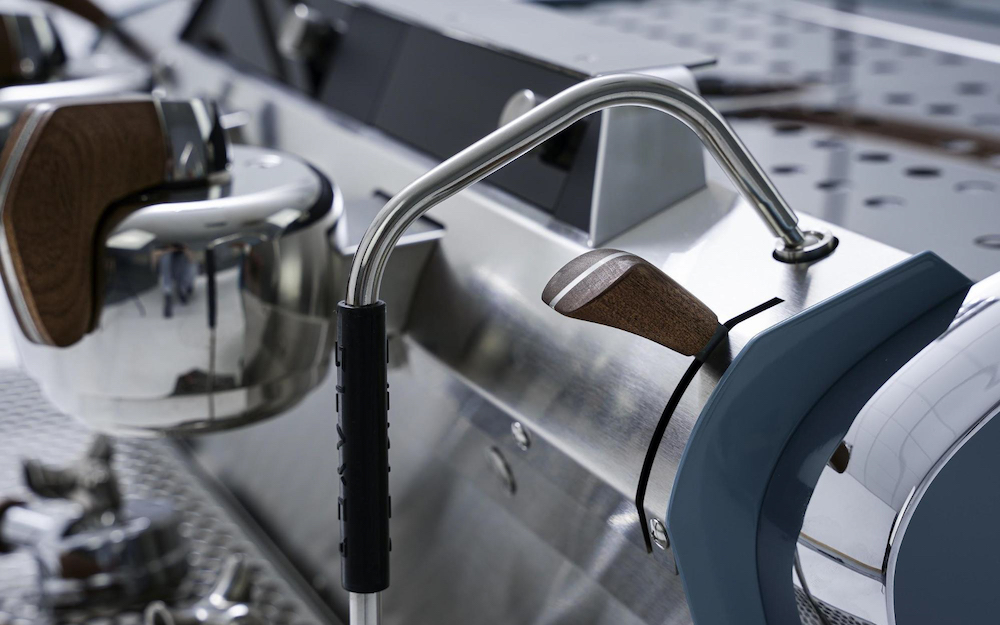
How is espresso machine design evolving?
In recent years, we have seen a focus on espresso machine design, as well as technical specifications. Machine design and style have become more of a priority for coffee shops; as such, more cafés are choosing to highlight their machines within their store layout.
“Gone are the days when an espresso machine only looked like a metal box on the counter,” Dan says.
Instead, espresso machines are now designed to look more sleek, modern, and stylish.
“When Slayer was first introduced to the international market, it showed the coffee industry what a modern espresso machine could look like, not just how well it could perform,” Christopher explains.
Furthermore, many newer brands, such as Slayer, have more of a focus on build quality and use higher-quality materials. These focuses can also complement the technological evolution of the machines over the past decade.
“Slayer uses high-quality materials to produce a machine that is ultimately memorable,” Christopher tells me. “The brand has set a new bar for [espresso machine design].”
However, it’s not quite as straightforward to design an espresso machine that boasts both technical excellence and outstanding aesthetics. This is why many equipment manufacturers will work with design agencies for support.
Dan tells me that this new approach to espresso machine design comes with “opportunities to rethink the norms of more traditional design while still considering the user experience”.
He adds: “We now have unique designs that make a bold statement, [as well as supporting the barista’s role].”
Some of these new design elements include “shot mirrors”, which give baristas a better view of the extraction, Dan says. He explains that this can help baristas spot any channeling; this is when water finds the path of least resistance through the coffee puck, leading to a combination of under and overextraction.
Dan adds: “Alongside this, large drip trays help to improve barista workflow, wing channels help to hide pipes and wires, and wooden actuators look elegant, as well as being functional.”
Christopher explains why espresso machine design is so important, especially for customers.
“We eat and drink with our eyes first, so it’s important that you create a good first impression with your espresso machine,” he says.
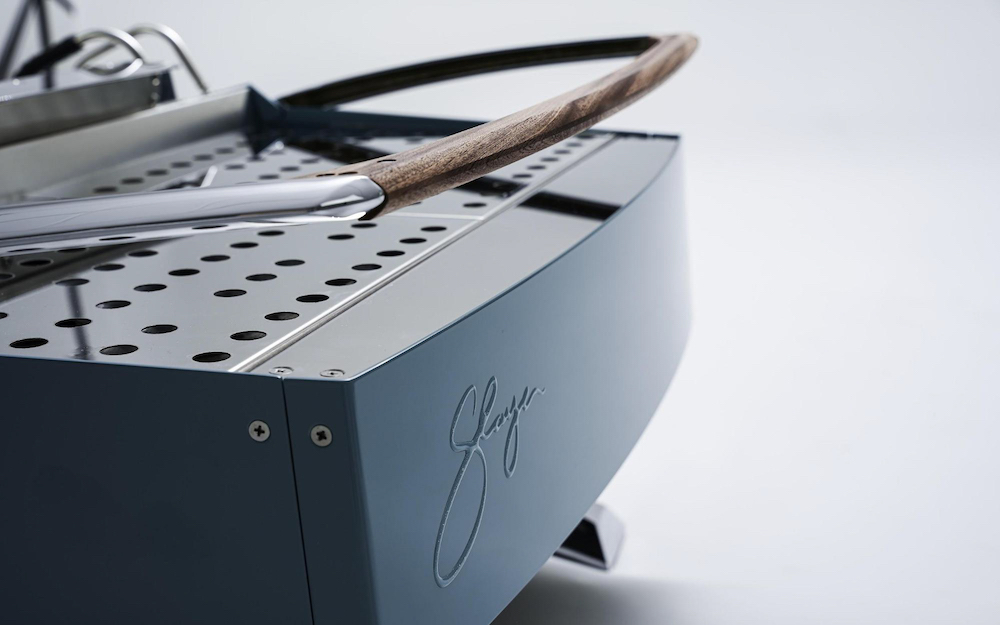
Customising your machine
Now more than ever, there is a need for specialty coffee shops to differentiate themselves from their competitors. The placement of your espresso machine can help you do this. When executed properly, it can show customers why your brand is unique.
Dan tells me: “Coffee shops want their physical spaces and tools, [including espresso machines], to align with their brand aesthetic and ethos.”
Previously, coffee shop owners could only choose from a limited range of colour options and materials. However, the growing demand for more customisable espresso machines means there are now significantly more options available. These include logos, more vibrant colour options, and different materials for back panels.
In particular, the broader range of materials allows coffee shops to create a more cohesive visual identity. For instance, wood panels create a warm and inviting feeling to your coffee shop, whereas metal is more minimalist and modern.
“Slayer’s fully customisable espresso machines [help to forge] a strong brand identity, as well as being able to extract high-quality espresso,” Dan explains.

Branding opportunities
By putting the espresso machine front and centre in your coffee shop, you make it one of the first things that customers will notice about your café. To put it simply, it’s an instant opportunity to highlight and promote your brand.
“Having an integrated and well-executed brand strategy is important these days, even for the smallest of coffee shops,” Christopher says. “A well-designed espresso machine helps to refine your strategy and [shows customers that you value quality].”
Furthermore, customising your espresso machine with your brand’s colours, logo, or any other marketing materials will make customers more likely to remember your coffee shop.
“Matching colour schemes, logos, and other brand-specific customisations all help to elevate the consumer experience,” Christopher tells me.
As far as the future of espresso machine design is concerned, it seems inevitable that branding and customisation will become more and more commonplace. For coffee shops around the world, it seems like close collaboration with espresso machine manufacturers will become increasingly important.
“[Consumers are recognising more and more] espresso machine brands and manufacturers these days, so cross-promotion can be a very powerful tool,” Dan says.
Moreover, high-quality espresso machines with customisable options will likely become more useful marketing tools for coffee shops looking to stand out in a saturated market.
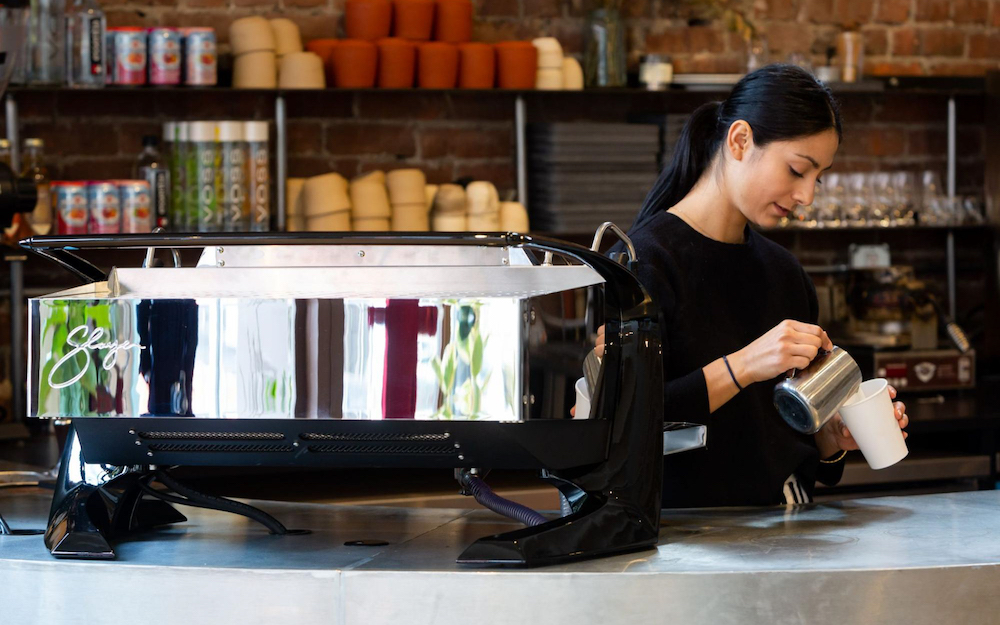
Within the specialty coffee sector, we’re seeing more and more coffee shops focus on the position of their espresso machines. By doing so, they can more easily grab the attention of customers as soon as they walk through the door.
Furthermore, with more customisation options available than ever before, you can position your espresso machine so it’s perfectly aligned with your brand – only further elevating the consumer experience.
Enjoyed this? Then try our article on how the home espresso machine market is evolving.
Photo credits: Gruppo Cimbali
Perfect Daily Grind
Please note: Gruppo Cimbali is a sponsor of Perfect Daily Grind.
Want to read more articles like this? Sign up for our newsletter!
The post Why should the espresso machine be the centrepiece of your coffee shop? appeared first on Perfect Daily Grind.
By: Zoe StanleyTitle: Why should the espresso machine be the centrepiece of your coffee shop?
Sourced From: perfectdailygrind.com/2022/10/espresso-machine-as-centrepiece-of-your-coffee-shop/
Published Date: Mon, 10 Oct 2022 05:32:00 +0000
Always check our latest articles at...
https://coffeecutie.com/espresso-brewing

